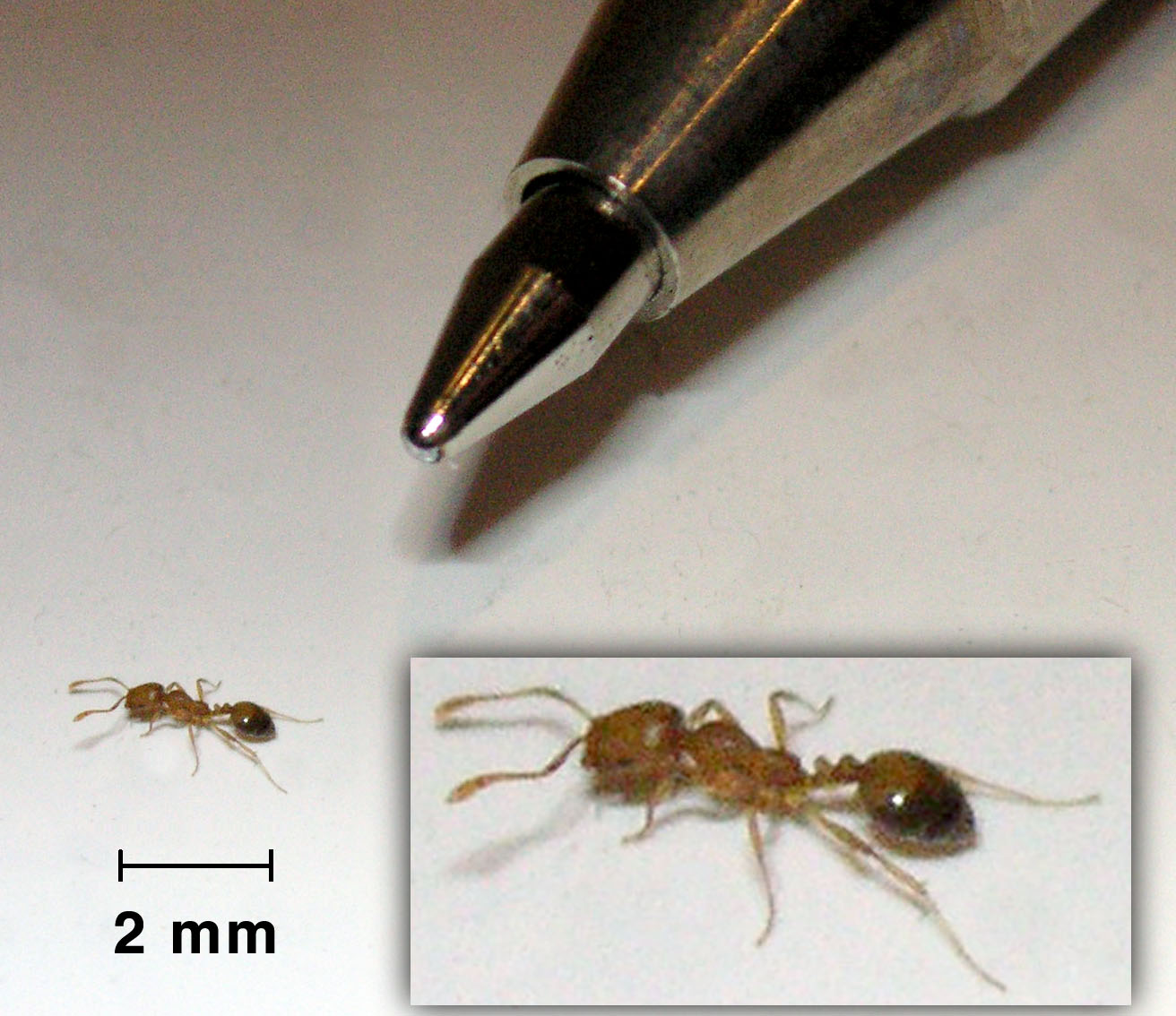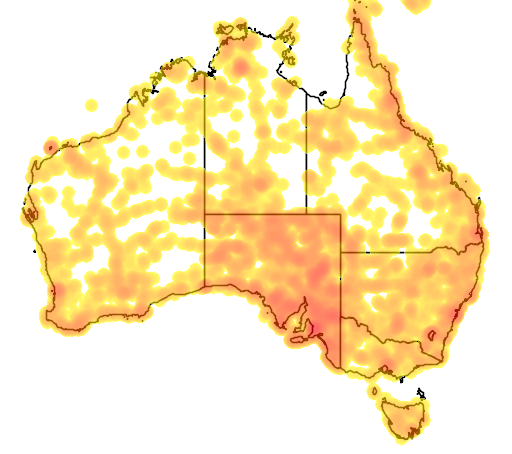|
Ant Supercolony
An ant supercolony is an exceptionally large ant colony, consisting of a high number of spatially separated but socially connected nests of a single ant species (meaning that the colony is polydomous), spread over a large area without territorial borders. Supercolonies are typically polygynous, containing many egg-laying females (queens or gynes).''Supercolonies.'' AntWiki (July 2022 accessed)''Outnumbered: a new dominant ant species with genetically diverse supercolonies in Ethiopia'' D.M. ... [...More Info...] [...Related Items...] OR: [Wikipedia] [Google] [Baidu] |
Formica Aquilonia
''Formica aquilonia'', also called the Scottish wood ant, is a species of wood ant of the genus ''Formica'' which are widely distributed in Europe and Asia, occurring from Scandinavia in the north to Bulgaria and Italy in the south, and from the UK eastwards through France and Germany to Russia, while they are also found in the coastal areas of the Sea of Okhotsk in eastern Siberia. They live mainly in coniferous forests but they do also occur in some deciduous woodlands. Description The Scottish wood ant has a reddish-brown head and thorax and a black abdomen. At the back of the head is a short fringe of hairs but this does not extend as far as the eyes. This ant has fewer, shorter hairs than are present in the other wood ant species found in Britain. Distribution The Scottish wood ant has a wide distribution across northern Europe, its range extending from Scandinavia to Siberia. It also occurs in the cooler parts of mountainous regions of central Europe and Asia. In Scotland ... [...More Info...] [...Related Items...] OR: [Wikipedia] [Google] [Baidu] |
Myrmica Rubra
''Myrmica rubra'', also known as the common red ant or erroneously the European fire ant, is a species of ant of the genus ''Myrmica'', found all over Europe and is now invasive in some parts of North America and Asia. It is mainly red in colour, with slightly darker pigmentation on the head. These ants live under stones and fallen trees, and in soil. They are aggressive, often attacking rather than running away, and are equipped with a stinger, though they lack the ability to spray formic acid like the genus ''Formica''. This species is very similar to '' M. ruginodis'', but ''M. rubra'' is the commoner of the two. The larvae of the butterflies ''Phengaris alcon'' (Alcon blue) and '' P. teleius'' (scarce large blue) use ''M. rubra'' as their primary host. Distribution and habitat This is one of the most common and widespread ''Myrmica'' species of the Palaearctic. It occurs in the region stretching from Portugal to East Siberia (as far as Transbaikalia), and from northern ... [...More Info...] [...Related Items...] OR: [Wikipedia] [Google] [Baidu] |
Monomorium Pharaonis
The pharaoh ant (''Monomorium pharaonis'') is a small (2 mm) yellow or light brown, almost transparent ant notorious for being a major indoor nuisance pest, especially in hospitals. A cryptogenic species, it has now been introduced to virtually every area of the world, including Europe, the Americas, Australasia and Southeast Asia. It is a major pest in the United States, Australia, and Europe. This species is polygynouseach colony contains many queensleading to unique caste interactions and colony dynamics. This also allows the colony to fragment into bud colonies quickly. Pharaoh ants are a tropical species, but they also thrive in buildings almost anywhere, even in temperate regions provided central heating is present. Physical characteristics Pharaoh workers are about 1.5 to 2 millimeters long, a little more than 1/16-inch. They are light yellow to reddish brown in color with a darker abdomen. Pharaoh ant workers have a non-functional stinger used to generat ... [...More Info...] [...Related Items...] OR: [Wikipedia] [Google] [Baidu] |
Linepithema Humile
The Argentine ant (''Linepithema humile''), formerly ''Iridomyrmex humilis'', is an ant native to northern Argentina, Uruguay, Paraguay, Bolivia and southern Brazil. It is an invasive species that has been established in many Mediterranean climate areas, inadvertently introduced by humans to many places, including South Africa, New Zealand, Japan, Easter Island, Australia, Europe, Hawaii, and the continental United States. Description The worker ants are long and can easily squeeze through cracks and holes as small as in size. Queens are long, much smaller than other species of ants. These ants will set up quarters in the ground, in cracks in concrete walls, in spaces between boards and timbers, even among belongings in human dwellings. In natural areas, they generally nest shallowly in loose leaf litter or beneath small stones, due to their poor ability to dig deeper nests. However, if a deeper nesting ant species abandons their nest, Argentine ant colonies will readily ta ... [...More Info...] [...Related Items...] OR: [Wikipedia] [Google] [Baidu] |
Lepisiota Incisa
''Lepisiota'' is an Old World genus of ants in the subfamily Formicinae. They nest in rotten wood, in standing trees or in the ground, generally in less forested areas. Species *'' Lepisiota acuta'' Xu, 1994 *'' Lepisiota affinis'' (Santschi, 1937) *'' Lepisiota ajjer'' (Bernard, 1953) *'' Lepisiota albata'' (Santschi, 1935) *'' Lepisiota alexis'' (Santschi, 1937) *'' Lepisiota ambigua'' (Santschi, 1935) *'' Lepisiota angolensis'' (Santschi, 1937) *'' Lepisiota annandalei'' (Mukerjee, 1930) *'' Lepisiota arabica'' (Collingwood, 1985) *'' Lepisiota arenaria'' (Arnold, 1920) *'' Lepisiota arnoldi'' (Forel, 1913) *'' Lepisiota aurea'' (Karavaiev, 1933) *'' Lepisiota bipartita'' (Smith, 1861) *'' Lepisiota cacozela'' (Stitz, 1916) *'' Lepisiota canescens'' (Emery, 1897) *'' Lepisiota capensis'' (Mayr, 1862) *'' Lepisiota capitata'' (Forel, 1913) *''Lepisiota carbonaria'' (Emery, 1892) *''Lepisiota chapmani'' (Wheeler, 1935) *''Lepisiota crinita'' (Mayr, 1895) *''Lepisiota curta'' ( ... [...More Info...] [...Related Items...] OR: [Wikipedia] [Google] [Baidu] |
Lepisiota Canescens
''Lepisiota canescens'' is a species of ant in the subfamily Formicinae which is native to southern Ethiopia. Supercolonies spanning as much as 38 kilometres have been found. Scientists believe that this ant species has the potential of spreading all over the world and posing threats to other ants. Colonies and adaptability The supercolonies were first discovered by a team of myrmecologists from the North Carolina Museum of Natural Sciences. D. Magdalena Sorger, a member of the team, has stated that the discovery of these species is significant for two (and now various) reasons. First, cases of finding super colonies are extremely rare, with only around 20 worldwide species having the ability to do so. And second, other species in the genus ''Lepisiota'' have recently made worrisome headlines all around the world. What is even more frightening about this fact, is that ''L. canescens'' is now far more invasive and destructive than its southern and western African counterparts ''L ... [...More Info...] [...Related Items...] OR: [Wikipedia] [Google] [Baidu] |
Lepisiota
''Lepisiota'' is an Old World genus of ants in the subfamily Formicinae. They nest in rotten wood, in standing trees or in the ground, generally in less forested areas. Species *'' Lepisiota acuta'' Xu, 1994 *'' Lepisiota affinis'' (Santschi, 1937) *'' Lepisiota ajjer'' (Bernard, 1953) *'' Lepisiota albata'' (Santschi, 1935) *'' Lepisiota alexis'' (Santschi, 1937) *'' Lepisiota ambigua'' (Santschi, 1935) *'' Lepisiota angolensis'' (Santschi, 1937) *'' Lepisiota annandalei'' (Mukerjee, 1930) *'' Lepisiota arabica'' (Collingwood, 1985) *'' Lepisiota arenaria'' (Arnold, 1920) *'' Lepisiota arnoldi'' (Forel, 1913) *'' Lepisiota aurea'' (Karavaiev, 1933) *'' Lepisiota bipartita'' (Smith, 1861) *'' Lepisiota cacozela'' (Stitz, 1916) *''Lepisiota canescens'' (Emery, 1897) *'' Lepisiota capensis'' (Mayr, 1862) *'' Lepisiota capitata'' (Forel, 1913) *''Lepisiota carbonaria'' (Emery, 1892) *''Lepisiota chapmani'' (Wheeler, 1935) *''Lepisiota crinita'' (Mayr, 1895) *''Lepisiota curta'' (E ... [...More Info...] [...Related Items...] OR: [Wikipedia] [Google] [Baidu] |
Lasius Neglectus
''Lasius neglectus'' is a polygynous, sometimes invasive, ant of the genus ''Lasius''. The ant was identified in 1990 after establishing a colony in Budapest, Hungary. Superficially, they are similar in appearance to the common black garden ant, ''Lasius niger'', but have significantly different behavioural patterns, particularly in the social structure within colonies. ''Lasius neglectus'' is believed to be prey for several animals and insects, specifically ''Clytra laeviuscula'' and some Picidae family birds. Colonies ''Lasius neglectus'' occupies 'super colonies', systems of interconnected nests with many queens, estimated to be over 35,500 in some colonies. The queens, instead of moving to a new nest to start a new colony, will mate within the existing colony. Unlike most ant species, queens mate underground and are incapable of flight. As the occupants of these colonies are related, they do not demonstrate territorial aggression. ''Lasius neglectus'' does not build elaborat ... [...More Info...] [...Related Items...] OR: [Wikipedia] [Google] [Baidu] |
Iridomyrmex Purpureus
''Iridomyrmex'' is a genus of ants called rainbow ants (referring to their blue-green iridescent sheen) first described by Austrian entomologist Gustav Mayr in 1862. He placed the genus in the subfamily Dolichoderinae of the family Formicidae. It has 79 described species and five fossil species. Most of these ants are native to Australia; others are found in Asia and Oceania, and they have been introduced to Brazil, New Zealand, and the United Arab Emirates. Fossil species are known from China, France, and the United States. These ants are known to be an ecologically dominant and important group of ants, but they are sometimes regarded as pests because they disturb soil and enter human houses. Farmers in rural Australia place animal carcasses on meat ant ('' I. purpureus'') mounds as a method of disposing of them; meat ants consume the carcass and reduce it to bones in a matter of weeks. Meat ants also engage in ritualised fighting, which helps prevent casualties and solve ... [...More Info...] [...Related Items...] OR: [Wikipedia] [Google] [Baidu] |
Formica Yessensis
''Formica yessensis'' is a species of ant in the genus ''Formica'', being known from eastern Asia and Japan. This species is especially known for its large colonies In modern parlance, a colony is a territory subject to a form of foreign rule. Though dominated by the foreign colonizers, colonies remain separate from the administration of the original country of the colonizers, the '' metropolitan state' ..., sometimes exceeding 300 million individuals. The workers are typically 8-10 mm in length. References External links * yessensis Hymenoptera of Asia Insects described in 1913 {{formicinae-stub ... [...More Info...] [...Related Items...] OR: [Wikipedia] [Google] [Baidu] |



